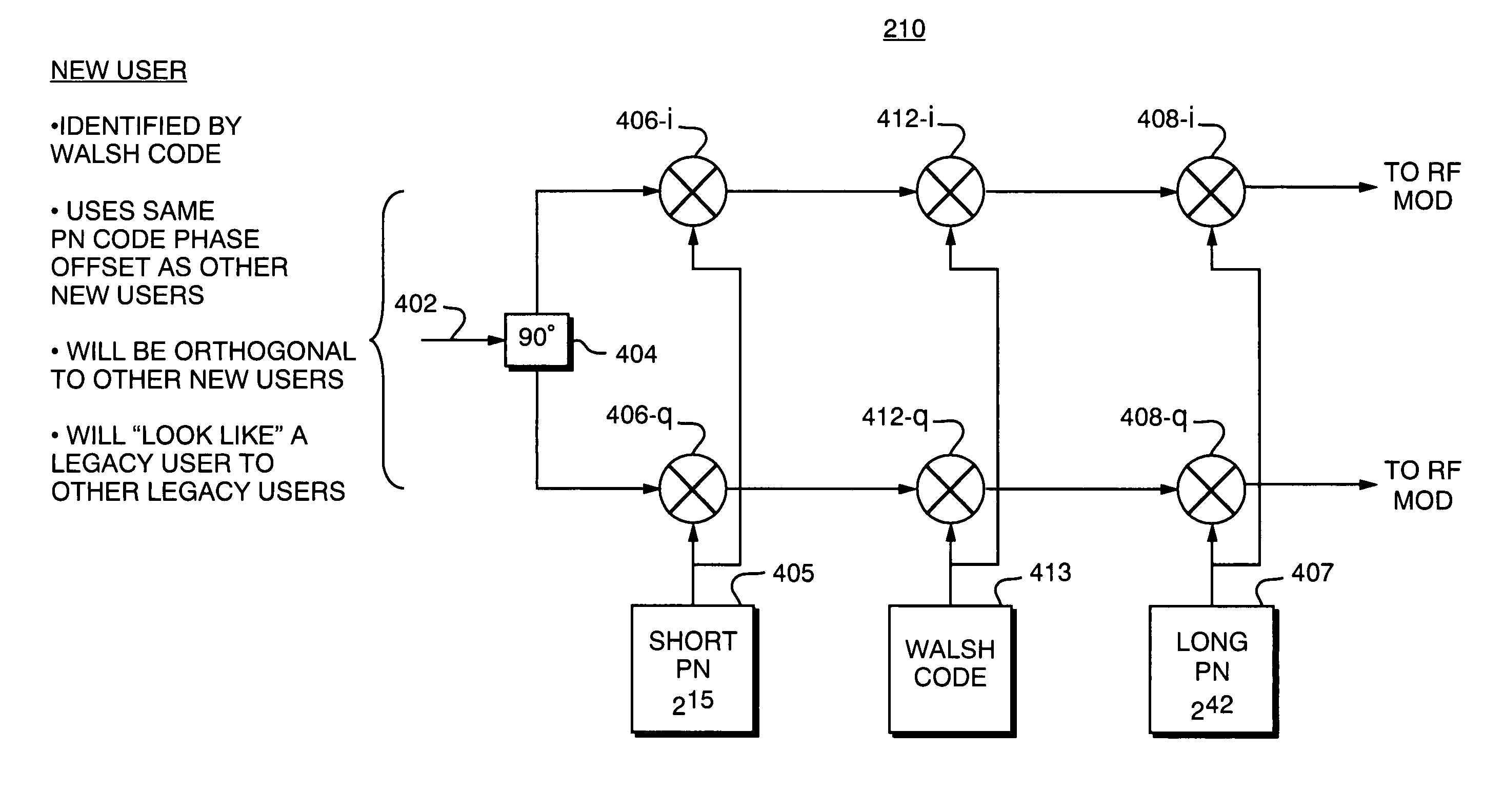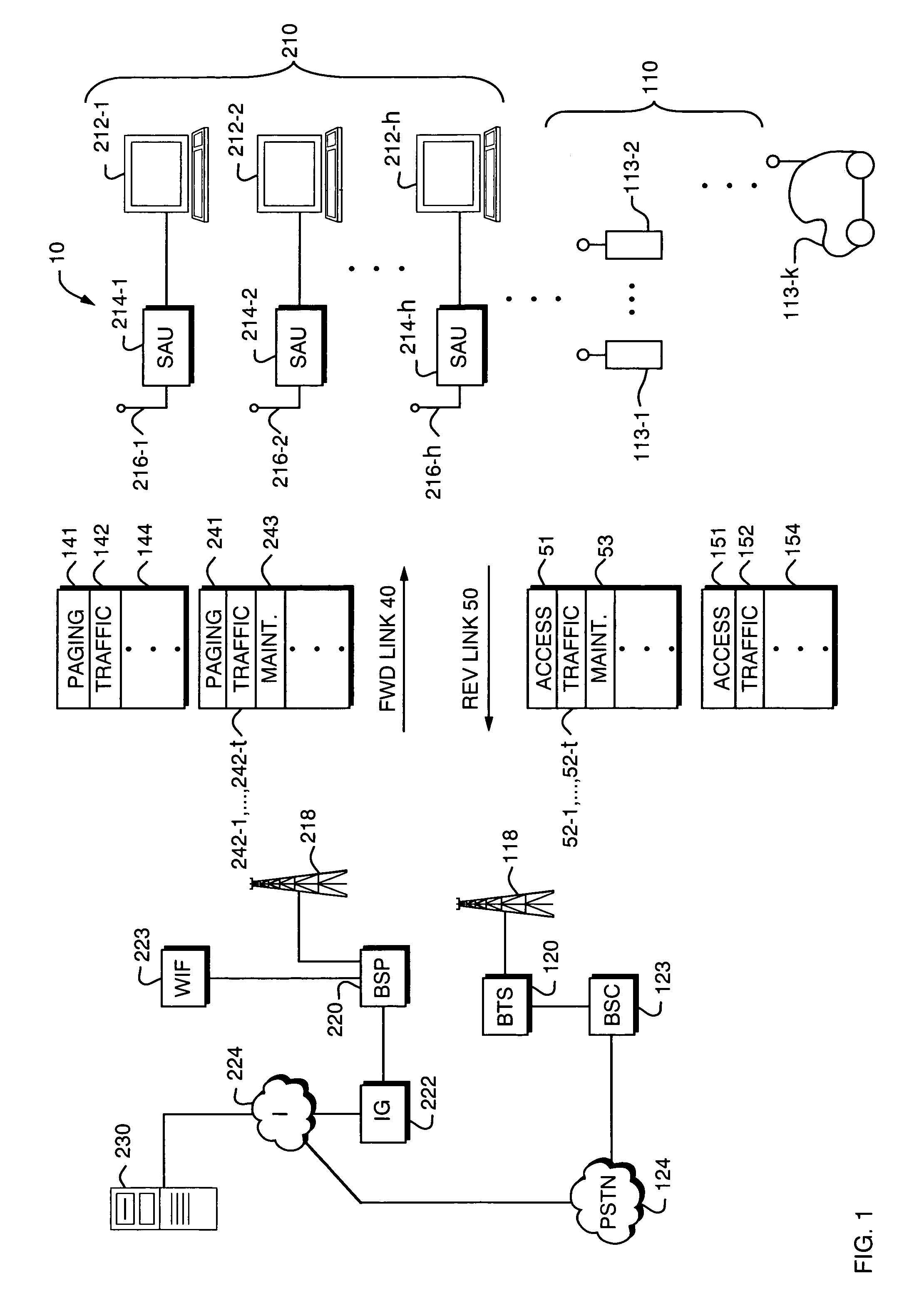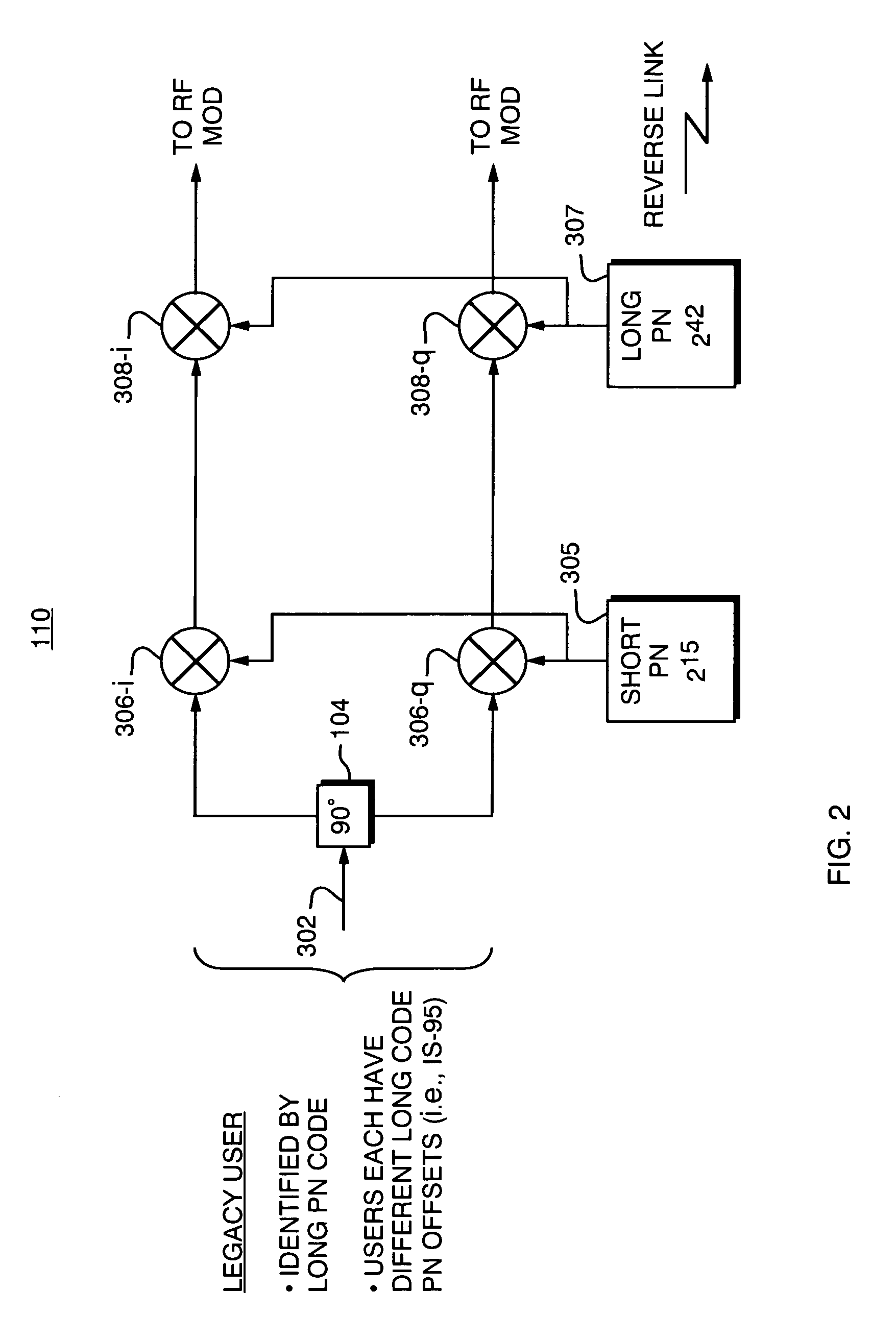Method for allowing multi-user orthogonal and non-orthogonal interoperability of code channels
a multi-user, orthogonal and non-orthogonal technology, applied in the direction of orthogonal multiplex, multiplex communication, wireless communication, etc., can solve the problem of preventing the possibility of orthogonal transmission of different users, too difficult to synchronize transmissions originating from remote units located in different locations,
- Summary
- Abstract
- Description
- Claims
- Application Information
AI Technical Summary
Benefits of technology
Problems solved by technology
Method used
Image
Examples
Embodiment Construction
[0018]FIG. 1 is a block diagram of a Code Division Multiple Access (CDMA) communication system 10 that makes use of a signal encoding scheme in which a first class of logical channels are assigned unique long codes with different code phase offsets, and a second class of logical channels are provided by using a common code and common code phase offset, combined with an additional coding process using a unique orthogonal code for each channel.
[0019]In the following detailed description of a preferred embodiment, the communication system 10 is described such that the shared channel resource is a wireless or radio channel. However, it should be understood that the techniques described here can be applied to implement shared access to other types of media such as telephone connections, computer network connections, cable connections, and other physical media to which access is granted on a demand driven basis.
[0020]The system 10 supports wireless communication for a first group of users...
PUM
 Login to View More
Login to View More Abstract
Description
Claims
Application Information
 Login to View More
Login to View More - R&D
- Intellectual Property
- Life Sciences
- Materials
- Tech Scout
- Unparalleled Data Quality
- Higher Quality Content
- 60% Fewer Hallucinations
Browse by: Latest US Patents, China's latest patents, Technical Efficacy Thesaurus, Application Domain, Technology Topic, Popular Technical Reports.
© 2025 PatSnap. All rights reserved.Legal|Privacy policy|Modern Slavery Act Transparency Statement|Sitemap|About US| Contact US: help@patsnap.com



